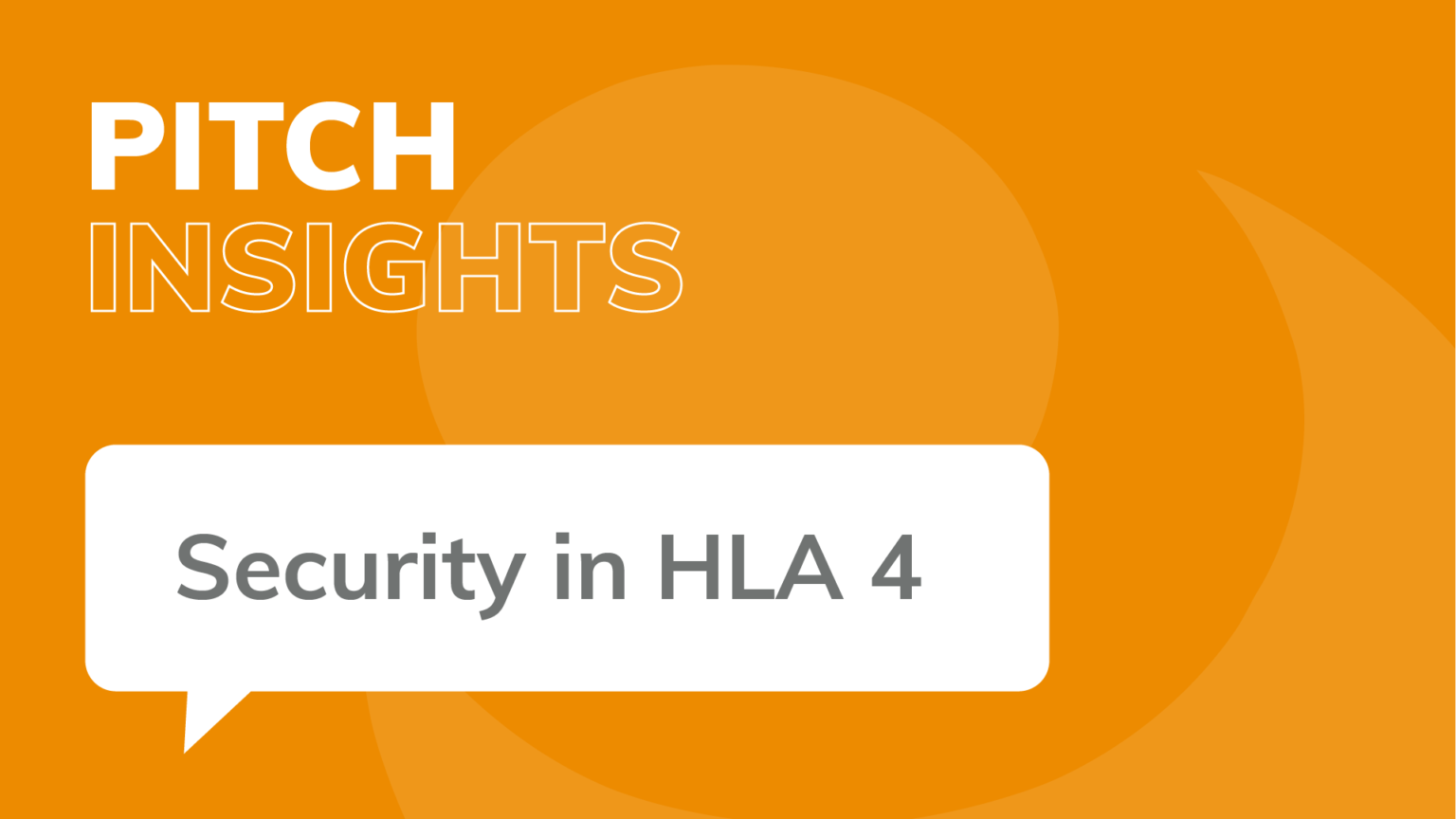Modern, advanced simulations often involve sensitive information—from classified military training to proprietary industrial processes and critical infrastructure models. Unauthorized access to these simulations can lead to military or trade secrets being compromised, which can result in the loss of equipment, money and human lives. Ensuring that only authorized personnel and applications can access and communicate within these simulations is essential.
The latest release of the HLA standard, HLA 4, introduces Access Control and Encryption, key security features that address these concerns. Access Control is an overarching term that consists of authentication (verifying who you are), and authorization (determining what you are allowed to do). Encryption, on the other hand, is about protecting your data as it travels across networks to ensure that no unauthorized parties can access it.
HLA 4 supports these fundamental security features through the introduction of Federate Authorization and Secure Federate Protocol connections. Together, they provide strong authentication, access control, and encrypted communication channels to safeguard your distributed simulation system from unauthorized access and potential cyber threats.
Why Does Security Matter with Simulations?
Organizations relying on simulation technologies are increasingly concerned with potential cybersecurity threats. Military simulations often involve highly classified data that adversaries would seek to exploit. Industrial simulations may model proprietary manufacturing processes or financial systems, where leaks could harm competitive advantage. Similarly, emergency response and infrastructure simulations involve data that, if compromised, could expose vulnerabilities in real-world systems.
Without security measures, unauthorized users could gain access to sensitive information, inject false data, eavesdrop on communications, or even disrupt an entire simulation. Data leaks can give adversaries an advantage, while injection of false data can invalidate the training or lead to incorrect conclusions that could affect decision making and future strategies. In addition to external threats, internal risks such as misconfigured access controls or accidental data exposure must also be mitigated. HLA 4 provides the structured security mechanisms needed to address these risks.
Federate Authorization: Controlling Access to Your Simulation
Imagine a high-security building where only individuals with proper ID badges can enter. Parts of the building can be more heavily restricted, allowing entry to only authorized individuals. Similarly, HLA 4 introduces Federate Authorization to control access to your simulation data and ensure only federates with the correct credentials can access your simulation.
Federates—software applications participating in an HLA simulation—must authenticate themselves using Credentials, which the Runtime Infrastructure (RTI), the core software component that manages communication and data exchange between federates in an HLA simulation, verifies before granting access. This authentication step is essential for preventing unauthorized entities from gaining access to sensitive simulation data.
The authorization mechanism in HLA 4 is designed to be flexible. It employs a plug-in architecture, allowing organizations to integrate their preferred authentication methods. These could include:
- API keys issued to trusted federates
- Certificates managed by a central authority
- Integration with enterprise authentication solutions such as OAuth or Active Directory
By implementing these security measures, HLA 4 ensures that only federates with the correct permissions can access and modify simulation data. This is particularly important in scenarios where different levels of access must be enforced, such as multinational military training exercises where different nations participate with different clearance levels.
Secure Federate Protocol Connections: Protecting Data in Transit
One of the significant advantages of HLA and distributed simulations is the ability to connect participants across different geographical locations. This enables cost-effective training and experimentation without requiring all users to be in the same physical space. However, transmitting sensitive data over open networks, such as the internet, introduces security risks.
Think of an intelligence agency that uses encrypted radios to communicate securely between agents. Likewise, HLA 4 can encrypt simulation data in transit, ensuring that unauthorized parties cannot intercept or modify the information being exchanged.
HLA 4 mitigates these risks through Secure Federate Protocol connections. Federate Protocol is a new, standardized communication method that enables federates to interact with the RTI over a network connection. This protocol can be secured in one of two ways. First, it can be configured to use TLS 1.3 encryption, which ensures that all data transmitted between federates and the RTI remains confidential and protected from eavesdropping or tampering. Second, since the protocol is standardized, software or hardware gates can be implemented to inspect all network traffic before allowing cross-domain transmissions.
Compliance with Security Requirements and Certifications
Successful use of distributed simulations is not just about implementing the right features; it is also about adhering to industry and government security standards. HLA 4 provides the foundational security structures necessary for compliance with these regulatory requirements. By supporting robust authentication, encryption, and access control, HLA 4 helps organizations mitigate risks while maintaining interoperability and trust in distributed simulation environments.
Real-World Use Cases for Secure HLA 4
The security enhancements in HLA 4 open up new opportunities for organizations requiring secure distributed simulations. Some real-world applications include:
- Military Training and Wargaming: Ensuring that classified training exercises remain protected from adversaries while allowing allied forces to securely collaborate from different locations.
- Healthcare and Medical Simulations: Protecting patient data and proprietary research when medical institutions and researchers collaborate on simulations involving sensitive health information.
- Industrial and Manufacturing Simulations: Preventing corporate espionage by protecting simulations used for optimizing manufacturing processes or testing new technologies.
- Emergency Response Planning: Emergency responders from different agencies can work together in crisis management simulations without worrying about sensitive operational details falling into the wrong hands.
Keep Simulations Secure with HLA 4
As simulations become more interconnected and critical to various industries, security must be a top priority. HLA 4 provides the tools needed to authenticate federates, control access to sensitive information, and encrypt data transmissions. By leveraging Federate Authorization and Secure Federate Protocol connections, organizations can confidently deploy secure distributed simulations while mitigating the risks of unauthorized access and cyber threats.
Contact us to learn more about HLA 4, secure simulation design, and how Pitch products can safeguard your next project!

